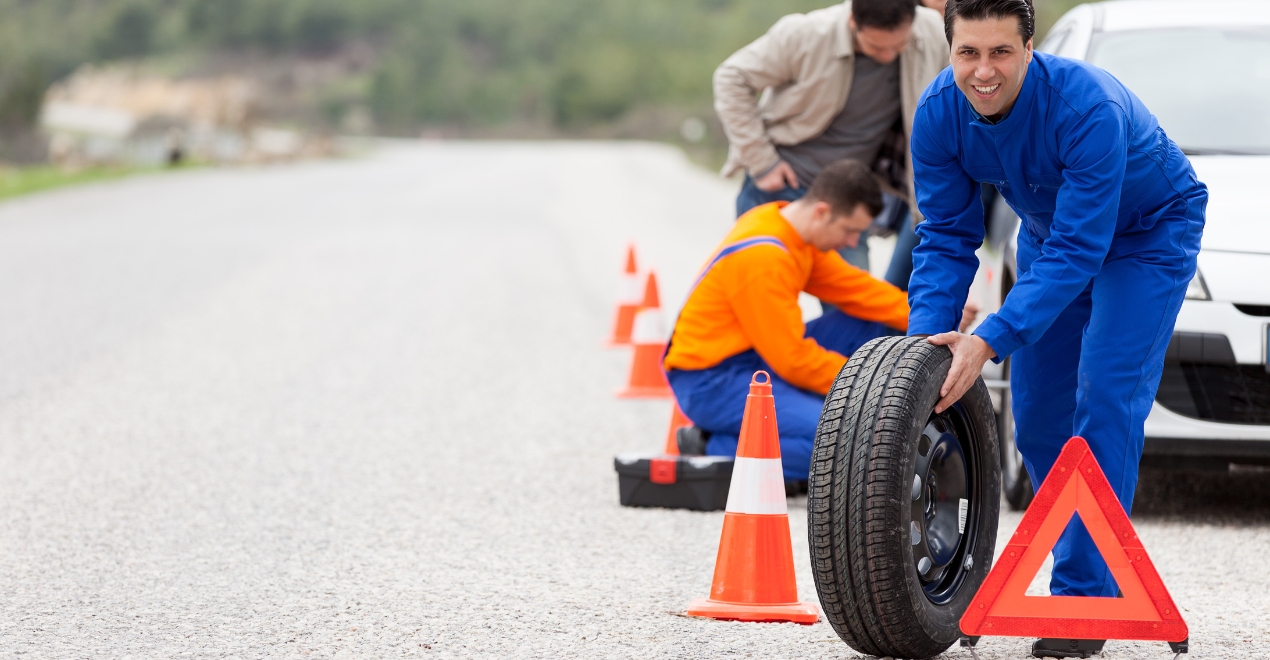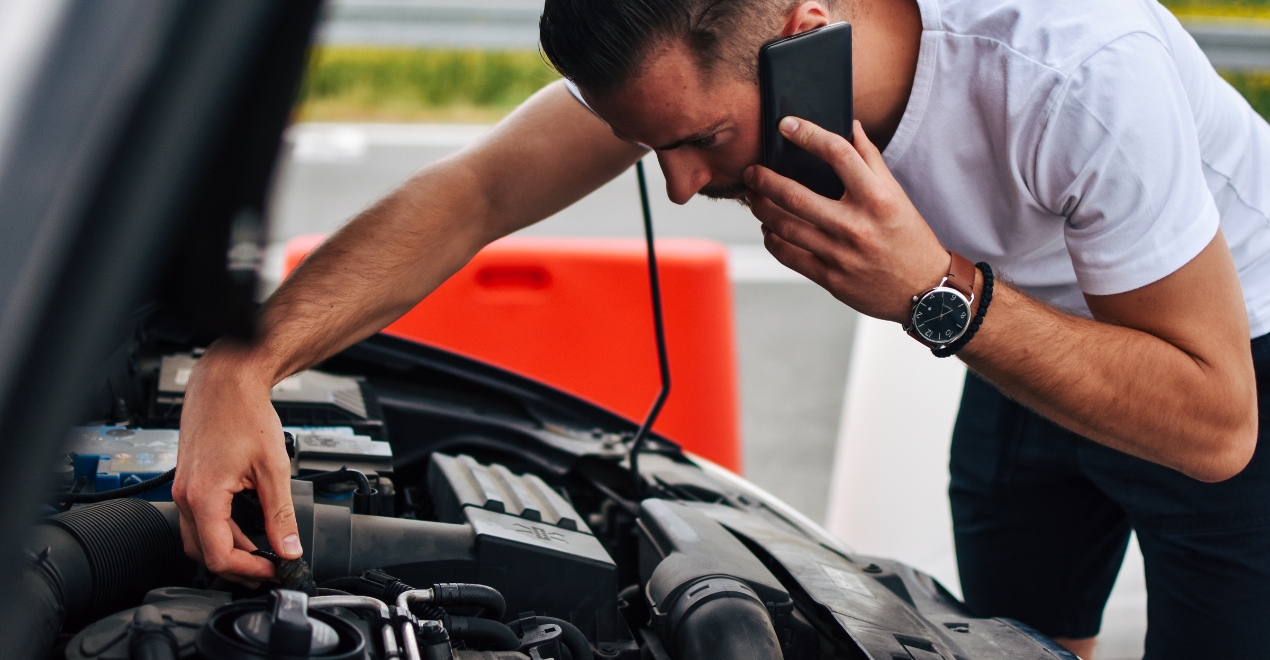Roadside assistance is a lifesaver for many drivers, offering peace of mind and practical help when unexpected vehicle troubles arise. Whether you experience a flat tire, a dead battery, or run out of fuel, knowing how to effectively use roadside assistance can make a significant difference in the outcome. In this article, we will explore five essential tips for making the most of roadside assistance services. These tips will ensure you are well-prepared, can access help quickly, and understand what to expect during the process. Ready to hit the road with confidence? Follow these 5 essential tips for using roadside assistance, and remember, when you need swift car repair service, trust Crossroads Helpline to get you back on track!
Table of Contents
ToggleUnderstand Your Roadside Assistance Coverage

The first and most crucial step in using roadside assistance effectively is to thoroughly understand your coverage. Different providers offer varying levels of service, and knowing what your plan includes can save you time and frustration in an emergency. Roadside assistance can be part of your auto insurance policy, a standalone service, or included with a car manufacturer’s warranty or a membership club like AAA.
Start by reviewing your roadside assistance policy or membership details. Pay attention to the types of services covered, such as towing, tire changes, battery jump-starts, lockout assistance, and fuel delivery. Also, note any limitations or exclusions, such as the maximum number of service calls allowed per year, distance limits for towing, or restrictions on service availability.
Understanding your coverage will help you set realistic expectations and avoid unexpected costs. For instance, if your plan only covers towing for a certain distance, you’ll need to be prepared to pay for any additional mileage. Additionally, knowing the specifics of your coverage can guide your decisions when choosing between different roadside assistance providers, ensuring you select one that meets your needs comprehensively.
It’s also beneficial to keep a copy of your roadside assistance policy or membership card in your vehicle at all times. This ensures you have quick access to important information, such as your policy number and the service provider’s contact details, in case of an emergency.
Keep Your Information Handy
When you find yourself in need of roadside assistance, having your information readily available can expedite the process. In the midst of an emergency, you might feel stressed or anxious, and searching for your policy details or contact numbers can add to the frustration. To avoid this, make a habit of keeping your roadside assistance information in an easily accessible place.
Store your roadside assistance membership card or auto insurance policy card in your vehicle’s glove compartment, along with any other essential documents like your vehicle registration and proof of insurance. You might also consider saving the roadside assistance provider’s phone number in your mobile phone contacts under an easily recognizable name.
In addition to having physical copies of your information, take advantage of digital tools. Many roadside assistance providers offer mobile apps that can simplify the process of requesting help. These apps often include features such as GPS tracking to pinpoint your location, direct access to customer service, and real-time updates on the status of your service request. Download and familiarize yourself with your provider’s app, if available, before you find yourself in a situation where you need it.
Having your information organized and easily accessible not only speeds up the process of getting help but also reduces the stress of the situation. By being prepared, you can focus on staying safe and calm while waiting for assistance to arrive.
Know How to Stay Safe While Waiting

Safety should be your top priority if you encounter a vehicle breakdown or emergency situation. Knowing how to stay safe while waiting for roadside assistance is crucial, especially if you are stranded in a potentially hazardous location, such as a busy highway or an isolated area.
First, ensure your vehicle is as far off the road as possible. If you can, move your car to the shoulder or another safe area away from traffic. Turn on your hazard lights to alert other drivers to your situation and make your vehicle more visible, especially at night or in poor weather conditions. If you have reflective triangles or flares, set them up around your vehicle to further enhance visibility.
If you feel safe doing so, stay inside your vehicle with your seatbelt fastened. This is particularly important if you are on a busy road where the risk of being hit by passing traffic is high. Lock your doors and keep your windows up until help arrives. However, if your vehicle is in a dangerous position, such as on a curve or near fast-moving traffic, it may be safer to exit the car and move to a secure location, keeping a safe distance from the road.
Communicate your location accurately when you call for roadside assistance. Use landmarks, mile markers, or your phone’s GPS to give precise information. This helps the service provider locate you more quickly and efficiently. If you are unsure of your exact location, describe your surroundings as best as you can.
Lastly, remain cautious of any strangers who may offer help. While many people have good intentions, it’s safer to wait for the professional assistance you have requested. If someone approaches you, stay in your car with the doors locked and politely inform them that help is on the way.
Be Prepared for Common Issues
One of the best ways to make the most of roadside assistance is to be prepared for common vehicle issues. Knowing what to expect and having basic emergency supplies on hand can make a significant difference in how you handle the situation.
Start by assembling an emergency kit for your vehicle. This kit should include essentials such as a first aid kit, flashlight with extra batteries, basic tools (like a screwdriver, pliers, and adjustable wrench), jumper cables, a tire pressure gauge, and a portable air compressor. Additionally, pack items that can help in adverse weather conditions, such as a blanket, extra clothing, non-perishable snacks, and bottled water.
Familiarize yourself with the basic functions of your vehicle and how to address common problems. For example, learn how to change a tire, check and refill fluids (like engine oil and coolant), and jump-start a battery. While roadside assistance is there to help with these issues, having the knowledge to handle them yourself can be invaluable, especially in situations where you might have to wait a while for professional help.
Regular vehicle maintenance is another key aspect of preparedness. Keep up with routine maintenance tasks such as oil changes, tire rotations, and brake inspections. Check your vehicle’s battery, lights, and fluid levels regularly. Preventative maintenance can reduce the likelihood of breakdowns and help you identify potential issues before they become serious problems.
Being prepared not only makes it easier to handle common roadside issues but also enhances your overall confidence as a driver. When you know what to do in an emergency, you can approach the situation calmly and effectively, minimizing stress and ensuring your safety until help arrives.
Communicate Clearly with Service Providers

Effective communication with roadside assistance service providers is essential for a smooth and efficient experience. Clear communication helps ensure that the service you receive is appropriate for your needs and that assistance arrives as quickly as possible.
When you contact roadside assistance, be prepared to provide detailed information about your situation. This includes your exact location, the nature of the problem, and any specific needs you might have. For instance, if you have a flat tire but do not have a spare, mention this so the service provider can come prepared. If your car won’t start, describe any unusual noises or behaviors that could help diagnose the issue.
Stay calm and patient while speaking with the dispatcher. Answer their questions clearly and follow any instructions they provide. If you are unsure about something, don’t hesitate to ask for clarification. The more accurate and detailed you can be, the better equipped the service provider will be to assist you.
In addition to providing information, listen carefully to any instructions or advice given by the dispatcher. They may offer guidance on how to stay safe, perform basic troubleshooting, or prepare for the arrival of the service technician. Following these instructions can help streamline the process and ensure a quicker resolution to your issue.
Once assistance arrives, continue to communicate clearly with the service technician. Explain the problem in detail and mention any steps you’ve already taken. If you have any concerns or questions, don’t hesitate to bring them up. Open communication helps the technician diagnose and fix the problem more efficiently, getting you back on the road sooner.
Clear communication is a two-way street. By being as informative and receptive as possible, you enhance the effectiveness of the roadside assistance service and contribute to a smoother, less stressful experience during vehicle emergencies.
Conclusion
Using roadside assistance effectively involves a combination of preparation, clear communication, and understanding your coverage. By knowing what your plan includes, keeping your information handy, staying safe while waiting, being prepared for common issues, and communicating clearly with service providers, you can ensure that you receive the help you need promptly and efficiently. These tips not only enhance your roadside assistance experience but also contribute to your overall peace of mind while driving. With the right knowledge and preparation, you can handle unexpected vehicle issues confidently and safely, making every journey a bit more secure.

